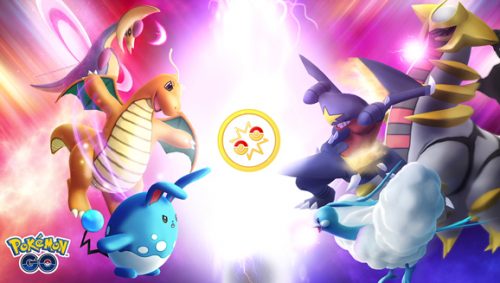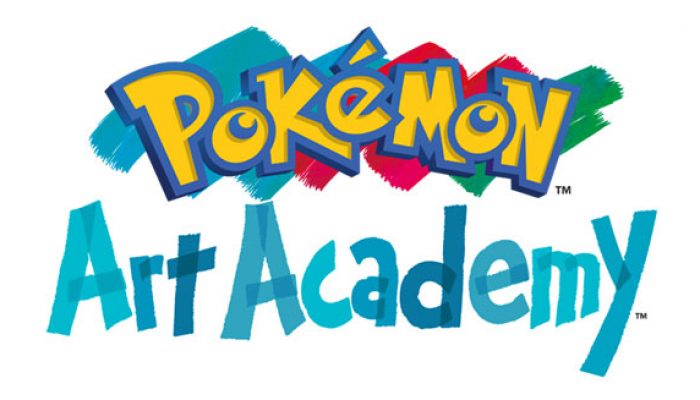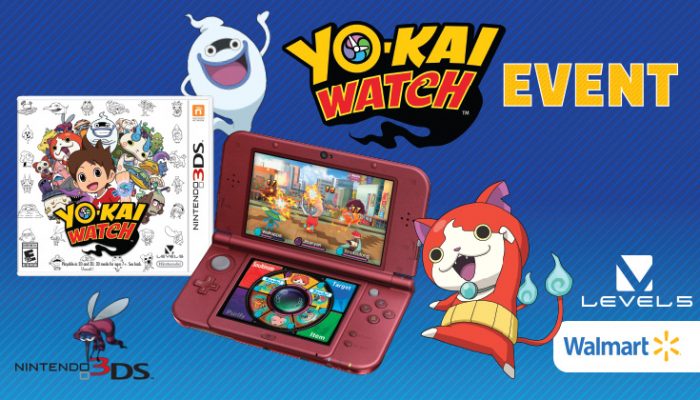 Just so you know, some of the requirements have been lowered because of the coronavirus outbreak.
Just so you know, some of the requirements have been lowered because of the coronavirus outbreak.
☆ NintendObs Weekly – Monday, March 9, 2020 – Sunday, March 15, 2020.

Get Started in the GO Battle League in Pokémon GO: Overview, Tips, and Rewards
The GO Battle League is now in full swing, providing Pokémon GO Trainers with an excellent opportunity to show off their battling chops, earn lots of Stardust, and encounter rare Pokémon. Trainer Battles are also a great way to have fun with Pokémon that might not be the best choice for Raid Battles, such as those that have lower CP or that are better at defense than offense.
It might seem like there’s a lot to learn about Trainer Battles and the GO Battle League at first, but the fun, fast-paced battles are easy to pick up. Read on to learn everything you need to know to start on your path to the top ranks, from how the GO Battle League’s ranking system works to what you should consider when building your team. You’ll be rising in the ranks before you know it!
How to Unlock Battles
You can unlock a set of five Trainer Battles in the GO Battle League by walking three kilometers. As you complete your set of battles, you’ll gain rewards for each of the five battles you win, and your rank might go up after you complete all five. After you’re done with a set of battles, you can get another by walking another three kilometers. You can earn distance toward your next set of battles if you walk around before completing your previous set, too, so you might have more battles ready right away. If not, you can spend some PokéCoins to unlock the next set of battles and keep the action going. The amount of PokéCoins required decreases as you get closer to the three-kilometer goal.
Once you decide to battle, you’ll select a team and get matched with another Trainer of a similar rank as you. This way, even if you’re just getting started, you won’t have to worry about battling a Trainer who has already racked up lots of GO Battle League wins.
How to Increase Your Rank and Rank Rewards
You’ll start your GO Battle League journey at rank 1. You’ll progress through the early ranks just by completing battles, regardless of whether you win or lose, but you’ll soon find that you need to win battles to continue moving up in the ranks. Eventually, when you reach the higher ranks, you’ll be able to see your rating, which is a numerical representation of your performance. If you’re shooting to be one of the best, set your sights on rank 10—the highest rank you can achieve in the GO Battle League.
Ranks aren’t just aesthetic—as yours increases, you’ll receive better rewards for winning battles. One of the most important reasons to increase your rank is the diversity of the Pokémon encounter rewards you can earn. The pool of Pokémon you can encounter from GO Battle League rewards expands as your rank increases, and you’ll be able to earn some rare Pokémon only once your rank is near the top. It’s much easier to earn these encounters if you use a Premium Battle Pass (previously called a Premium Raid Pass) before starting a set of battles. Doing so allows you to enter on the premium-rewards track, which significantly reduces the number of matches you need to win to net the encounter reward.
League Rotations: Great League, Ultra League, and Master League
Trainer Battles in Pokémon GO take place in one of three different leagues, each of which has its own CP cap. The GO Battle League often features only one of these leagues at a time, rotating between them periodically during each season. You’ll have to master battling in each league to keep a steady flow of rewards coming in. While the strategy of Trainer Battles is the same no matter which Pokémon you’re using, the Pokémon that experienced Trainers tend to favor vary in each league.
The Great League is the easiest league to get started with because only Pokémon with 1500 CP or less can participate. The most important thing to remember about the Great League is that Pokémon species that have relatively low maximum CP compared to other species can fight on more even ground due to this league’s low CP cap. You won’t frequently see Pokémon like Azumarill, Medicham, and Altaria in the other two leagues, but in the Great League, these Pokémon can be the key to victory.
The Ultra League caps the CP of participating Pokémon at 2500. You’ll start seeing more Legendary Pokémon in the Ultra League, especially the more defensively inclined Legendary Pokémon like Registeel, Altered Forme Giratina, and Cresselia, which have lower maximum CP than some of the other powerhouse Legendary Pokémon. But don’t let the presence of these Legendary Pokémon fool you—plenty of other Pokémon are excellent performers in the Ultra League, too. Many of the first-partner Pokémon with Community Day–exclusive attacks, such as Venusaur with Frenzy Plant and Swampert with Hydro Cannon, are also popular choices in this league.
The Master League allows any Pokémon to participate, regardless of its CP. As you might expect, Trainers in this league trend toward Pokémon with high maximum CP. Pokémon that shine in this league are often also great choices for Raid Battles, too, so you’ll get lots of value from training Pokémon like Mewtwo, Kyogre, Groudon, and Origin Forme Giratina to their maximum power. However, some Pokémon that aren’t such popular picks for Raid Battles are also powerful competitors in the Master League: Mew, Dialga, and Altered Forme Giratina are all key contributors, for example.
Building a Balanced Team for Trainer Battles
Making a team for Trainer Battles is challenging, and your success can depend on which Pokémon your opponent uses. To improve your odds as much as possible, it’s good to select a team of Pokémon that can cover one another’s weaknesses as much as possible—you don’t want to go into battle with three Pokémon weak to Fire-type attacks and get run over by a single Charizard.
It’s also crucial to consider which Pokémon your opponents are most likely to be using. Each league has some Pokémon that are favored by a lot of competitors. If you’re a fan of these Pokémon, you may want to build your own teams featuring them. But whether or not you use the most popular Pokémon, it’s important to make sure you have Pokémon on your team that can handle them. For instance, Dragon-type Pokémon, like Giratina, are popular in the Ultra and Master Leagues, so many Trainers use Pokémon with the Fairy-type Fast Attack Charm, usually Clefable or Togekiss, to gain an advantage against Dragon types. Pay attention to the Pokémon you’re seeing a lot of in battle, and make sure you’re prepared to defeat them.
Pick Pokémon Perfect for Trainer Battles
If you’re just jumping into Trainer Battles after focusing on Raid Battles, it’s a good idea to supplement the Pokémon you’ve already powered up with ones more focused on Trainer Battles.
Many Trainers have used their resources to train Pokémon that can quickly dish out damage to beat the clock in Raid Battles and earn as many Premier Balls as possible. In Trainer Battles, you should value your Pokémon’s stats more evenly. Matches are a race to defeat three Pokémon before your own three Pokémon are defeated, so taking less damage is just as valuable as dealing more. If you were surprised to see Pokémon like Registeel and Altered Forme Giratina mentioned earlier, it’s probably time to start expanding your roster.
In addition to your Pokémon’s stats, some other key elements to consider are that not all Fast Attacks fill up the attack meter at the same rate and that some Charged Attacks become ready to use more quickly than others. Pokémon that can quickly fill their attack meters and that have Charged Attacks that reach full charge earlier are popular choices for Trainer Battles, in large part due to their ability to pressure the opponent into using their Protect Shields. For example, Swampert is widely used because it can fill up its attack meter rapidly using its Mud Shot Fast Attack, and its Community Day–exclusive Charged Attack, Hydro Cannon, takes little time to become fully charged.
Preparing for Battle: Training, Second Charged Attacks, and TMs
Since every Trainer is competing with the same restrictions, it’s important to get as much as you can out of your Pokémon to avoid leaving them at a disadvantage. In addition to the species of Pokémon you select, there are two other main factors to consider: the CP of your Pokémon and the attacks they know.
CP is simple on the surface but surprisingly tricky to optimize. CP is a representation of a Pokémon’s power, so you’ll generally want your Pokémon’s CP as close to the maximum CP permitted as possible (or as high as possible in the Master League). Each individual Pokémon‘s CP can differ from others of that Pokémon’s species due to its stats, which you can see by appraising it.
By tapping the Power Up button on a Pokémon’s profile, you can see how much your Pokémon’s CP will increase if you go through with powering it up. By comparing the difference between the Pokémon’s old and new CP, you can get a feel for roughly how much CP it’ll gain each time you power it up. If you’re training a Pokémon for the Great League, it’s worth busting out the old abacus to see if your Pokémon is going to hit the jackpot and wind up near 1500 CP, or unfortunately skip from 1460 to over 1500, before you spend a lot of Stardust.
It could be useful to keep in mind that the Attack stat influences a Pokémon’s CP more than Defense and HP do. Some Trainers are very particular about their Pokémon, opting to use Pokémon that have lower Attack and higher Defense and HP to get a little more overall power at a lower CP. It costs a lot of Stardust to train primo Pokémon, so make sure you’re happy with your Pokémon before you invest.
Teaching your Pokémon a second Charged Attack can sometimes cost even more Stardust than powering it up. It’s an especially big hit to your Candy and Stardust to teach a second move to rarer Pokémon, especially Legendary Pokémon, but it’s a huge disadvantage in battle to know only a single Charged Attack. When your Pokémon has an extra Charged Attack, you can teach it Charged Attacks from two different types, reducing the odds that your Pokémon winds up stuck in battle against an opponent it can’t deal much damage to.
Finally, it’s important that your Pokémon has the best attacks available to execute your strategy. “Best” can mean a lot of things—perhaps you want your Pokémon to know attacks that are super effective against a Pokémon you’re concerned about beating, or maybe you just want to maximize your Pokémon’s damage output with attacks of its own type. Either way, it’s worth spending a few TMs so your Pokémon knows the attacks you want. You don’t want to find yourself narrowly losing a battle because your Pokémon didn’t know the right attacks!
Get Out There and Battle!
We hope this overview helps you get started, but to become the very best in the GO Battle League, you’ll have to learn some things through experience. Work on getting a feel for which Pokémon seem to fare best in the first spot in your team, when to use your Protect Shields, and when to switch (after you switch your Pokémon, you’ll have to wait a long time before you can switch again!).
If you have some Premium Battle Passes (previously called Premium Raid Passes), don’t be afraid to use them if you feel confident at your current rank. The difference in rewards is significant, especially if you don’t win all five of your matches. You’ll get more than twice as much Stardust as you normally would, and you’ll have a much easier time getting the valuable Pokémon encounter reward.
We hope to see you at rank 10 soon, Trainers! Good luck, and keep checking Pokemon.com for news and strategy about Pokémon GO and other Pokémon games and apps.
— Pokémon News
Source: Pokémon.
At NintendObserver, the comments are on Discord.
Click on Community to learn more. 🙂
…
…Wanna play? Buy a 3DS.
That being said, click on Pokémon Go for everything you need to know about the game. 😀







